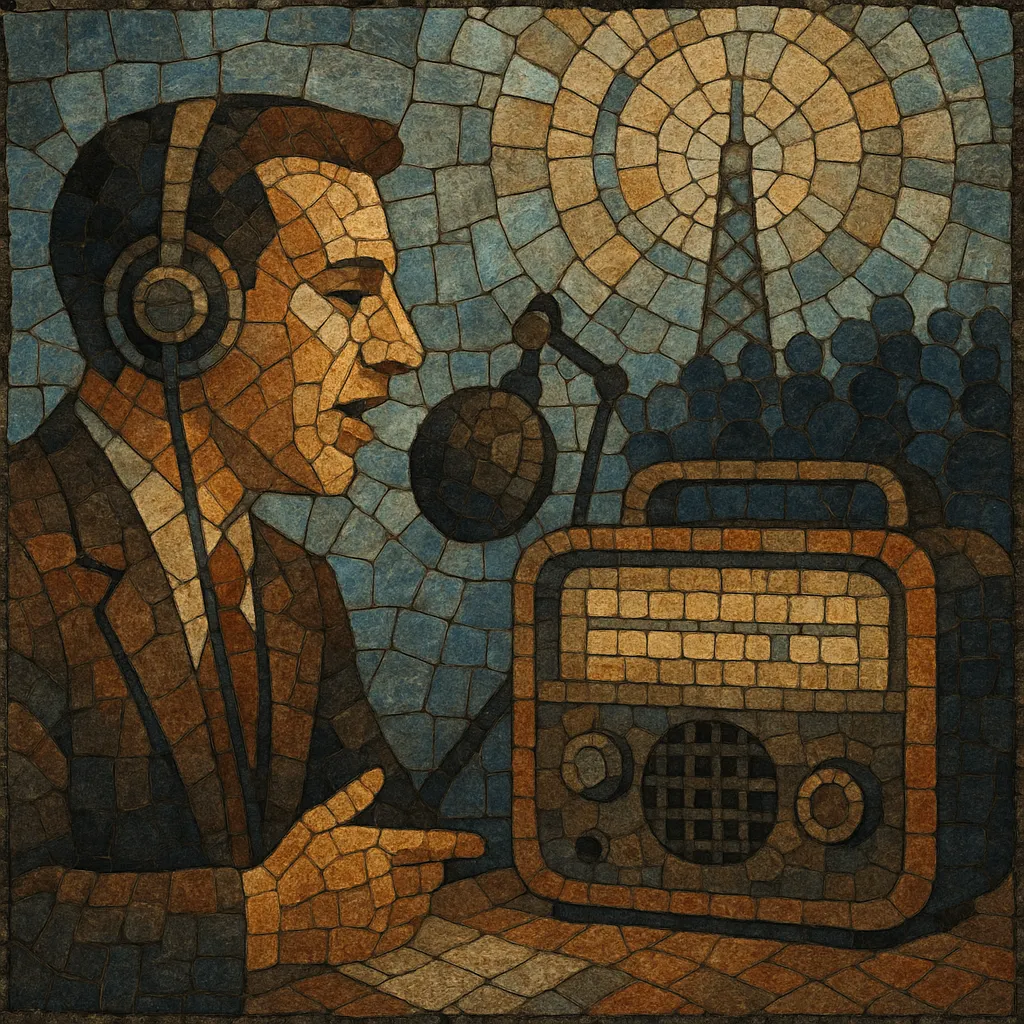
Radio broadcast recordings are archival or off-air captures of live radio programs, ranging from music performances and variety shows to news bulletins, drama, comedy, and DJ airchecks.
They include studio sessions performed specifically for radio (often recorded to transcription discs or tape), as well as direct off-air recordings made by engineers, collectors, or the stations themselves. The sound can vary from band-limited, mono, lo‑fi captures to surprisingly high-fidelity transcriptions, depending on era and medium.
Culturally, these recordings preserve the immediacy and ephemerality of radio: sponsor read‑outs, station IDs, vintage jingles, crowd reactions, and unedited presenter patter. They are invaluable to historians and reissue labels, and they inspire modern sample-based styles that mine their nostalgia, texture, and institutional aura.
Commercial radio took off in the early 1920s in the United States, soon followed by Europe. As live, real‑time programming became the norm, engineers developed ways to preserve shows. By the 1930s, 16‑inch, 33⅓ rpm transcription discs enabled high‑quality, longer‑duration recordings for delayed broadcast and syndication. Variety programs, dance orchestras, crooners, and dramatic serials were regularly captured this way.
The 1930s–40s saw networks (NBC, CBS, BBC) refine radio as mass entertainment and information. News bulletins, wartime addresses, and big-band remotes from ballrooms were routinely recorded. Airchecks—engineer or enthusiast off‑air recordings—preserved DJ talkovers, sponsor spots, and live cuts that often never saw commercial release.
Post‑WWII magnetic tape improved fidelity and editing. FM stereo and public broadcasters commissioned in‑studio sessions (e.g., “at the BBC”), capturing jazz, pop, and rock acts in intimate, time‑boxed sets with presenter intros. These sessions later became core archival releases and bootlegs.
Collectors and labels began restoring transcription discs and tapes, issuing historic broadcasts by swing bands, jazz greats, and iconic radio dramas. Archive institutions digitized holdings, while bootleg trader networks circulated legendary airchecks and live-in‑studio rock sessions.
Digitization and open archives (including libraries and online repositories) broadened access. Producers in hauntology, vaporwave, and plunderphonics repurposed radio ephemera—jingles, station IDs, and announcer voices—for new aesthetics. Meanwhile, restored broadcast recordings inform musicology, media studies, and reissue markets.
Choose a period‑appropriate act that would plausibly perform on radio: a small jazz combo, big band, crooner with rhythm section, folk group, or spoken‑word/drama cast. Keep arrangements concise (2–4 minutes per song/segment) to fit broadcast slots.
Use mono (or early stereo) mic techniques and period‑evoking transducers (ribbon or dynamic mics) with minimal close‑miking. Employ gentle broadcast‑style compression/limiting and a band‑limited EQ curve (e.g., focus 100 Hz–6 kHz) to emulate AM or transcription disc character. Add light room ambience (short chamber/plate) rather than modern long reverbs.
Open with a station ID or presenter intro. Interleave sponsor reads, jingles, and brief announcer patter between pieces. Maintain live continuity: quick count‑offs, audience reactions (if applicable), and minimal edits to preserve the on‑air feel.
Favour tight, rehearsal‑ready performances with clear diction for vocals/announcing. For big‑band/jazz, keep rhythms danceable (swing or two‑step feels) and solos concise. For drama/comedy, script around sound effects and musical stingers, ensuring intelligibility over limited bandwidth.
Optionally emulate media artifacts: mild disc crackle, tape hiss, azimuth wobble, or AM flutter—used tastefully. Print a "safety copy" and a "broadcast master" at slightly different EQ/compression to mimic archival practices. Tag with faux time‑calls, news stingers, or era‑specific interval signals.
Clear rights for any archival samples, sponsor logos, or station IDs. Document performers, date, venue/studio, and signal path, mirroring historical broadcast logs for authenticity.

